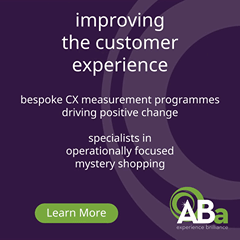Head not heart: Why retailers need data to make sense of the post-COVID-19 consumer
Customer-focused strategies and digital-centric technical capabilities are essential, says David Rosen, Technology and Customer Leader at TIBCO Software.
Global shortages of dry yeast during the COVID-19 lockdowns said a lot about how we humans operate. When the chips were down, we focussed on our basic needs, confirming Yuval Noah Hariri’s theory, in his best-selling book Sapiens, that we are indeed enslaved by our desire for bread. What was just as telling were the other products that topped the retail charts, from gym equipment and jigsaw puzzles, to hair dye and wine; but how were retailers supposed to know? Who could have predicted the peaks and troughs in product popularity? If there is a lesson that can be learned (and learned quickly because speed is now of the essence) it’s that retailers need every ounce of customer intelligence they can get.
While COVID-19 has wreaked havoc on the traditional high street, there are at least some signs of recovery, even if it is short lived. In the UK the British Retail Consortium-KPMG monitor reported total UK sales up 3.4% in June but this is expected to level out. It’s a similar story in Spain, Italy and perhaps to a slightly lesser extent, Germany, although a third of 400 brick and mortar shops feel their existence is under threat, according to June research by the German Retail Federation. Retailers across Europe are under increased pressure to adapt to new consumer habits, as well as build resilience in the face of continued restrictions related to COVID-19.
In many ways, what COVID-19 has done is accelerate what was already happening in retail. Back in November and December 2019, retail sales were hardly buoyant despite Christmas, at least not to previous years’ levels and talk was of the need for change. This was especially true of some larger retailers, such as Debenhams and Beales and what COVID-19 has done is exposed those organisations that have been slow to adapt and understand the changing market dynamics.
Channel blurring
Understandably, lockdowns led to increased online buying. As EY claims, this has been reflected in the growth figures posted by online payment firms. For example, ACI Worldwide posted a 74%+ increase in transaction volumes for most online retail sectors, while Adyen reported it has processed 30% to 50% more retail payments during the crisis than before COVID-19. For some retailers this would have come as a bit of a shock to the system, but for others, it’s a trend that just accelerated what was already happening and justified investments in ecommerce channels.
As we emerge from lockdowns and face-up to the economic realities in our markets, the challenge is to predict the future and determine to what extent these channels are relevant to consumers? We would argue that retailers now need to blur channels and eliminate dated ideas of rigid channel distribution altogether. The focus instead should be on delivering across all platforms and touchpoints and engaging with customers regardless of whether they are in-store or online.
Predicting the future
So, how do retailers do this? If they weren’t already, it is now essential for retailers to develop a digital-centric strategy that enables greater control over channels and distribution and frees-up resources to focus on customers. As our infographic shows, data is driving retail transformation and that means retailers need to be able to access and analyse data from multiple sources.
The idea is that personalisation will drive improved engagement with customers but to do that retailers need to combine full contextual awareness of multiple data points. This can include location, real-time behaviour, inventory and competitive pricing and can be correlated with past purchases and demonstrated preferences, to generate a highly appropriate ‘next action’.
This understanding of customers can then be translated into how experienced-based commerce can be designed and implemented. While COVID-19 has perhaps been a bit of a bolt from the blue, certainly in terms of how quickly consumer engagement with retail has been forced to change, the ongoing importance of curation of digital and hybrid experiences will likely emerge as one of the most dominant characteristics of post-pandemic commerce. As KPMG asks in its paper, The realities of retailing in a Covid-19 world, “how will you maintain trust in your brand and your products and services? How will you reset expectations for today? And how will you recover the customer experience in the future? In this environment, shoring up the customer relationship is just as important as shoring up the bottom line.”
Supply and demand
Of course, retailers also have to ensure they have enough of the right products to sell. Product shortages during the pandemic exposed weaknesses in supply chains but also a lack of visibility of suppliers. As retailers look to build greater resilience, they will need to evolve seamless ecosystems through greater product and supplier insight. A combination of new insight into the availability and location of inventory and the ability to seamlessly connect to the means of delivery will be a dominant aspect of a longer-term digital commerce ecosystem.
Such a system would inevitably ease supply strain during times of crisis but it would also help retailers find greater efficiencies within the supply infrastructure. This is also an important piece of the machinery needed to enable demand-drive supply. As we have seen, customer demand can shift dramatically, not just as a result of COVID-19 but also other factors such as weather, seasonal celebrations and economic fluctuation. Understanding customer demands will help retailers understand what to sell, where to sell and when to sell.
This is particularly important when retailers want to offer sophisticated personalisation of merchandise and to ensure more products have a higher level of availability. Accessing the sources of data that define the digital landscape and interconnecting each device, system, and application that plays a part in that ecosystem will enable retailers to drive strategy. While analysing data from these sources turns the job of prediction from an art to a science, it should also enable retailers to react to what is happening in real-time. More than ever before retailers have the ability to make sense of consumer habits and react accordingly, and in a post-COVID-19 world, that could be the difference between success and failure.
Get in touch with TIBCO, or visit their retail solution page for more details.














